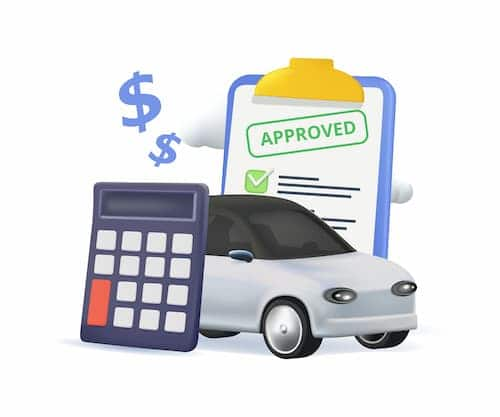What does PLPD insurance cover?
PLPD covers you when you’re at fault in an accident. It includes personal liability, usually called bodily injury liability, and property damage liability. PLPD doesn’t cover any injuries to you or damage to your car.
Personal liability car insurance
The PL in PLPD stands for personal liability. This coverage kicks in when you are at fault in a car accident where others are injured. It’s known as "bodily injury" coverage in most states. Personal liability covers:
- Medical expenses. Hospital, ambulance and other medical costs, such as wheelchairs, crutches and other necessary medical equipment.
- Pain and suffering. Legal costs for a pain and suffering lawsuit, as well as any judgments or settlements up to your coverage limits.
- Lost wages. Lost income for injured people who are unable to work during recovery.
Personal liability for bodily injury has two coverage levels. The first is the maximum amount the policy will pay out per person, and the second is the maximum for all people injured in the accident.
If you have PLPD coverage of 100/300/100, those first two numbers are your bodily injury limits. This policy will pay:
- $100,000 for injuries to any single person
- $300,000 in total for injuries to everyone involved
Each state has a minimum amount of bodily injury coverage that’s required by law. In California, for example, the limits are 15/30. In a serious accident, this coverage will run out quickly. Some states have higher minimum requirements. Alaska and Maine, for example, have raised the minimum to 50/100. However, this might not be enough, especially in a serious accident with multiple injured people.
Consider how much you have to lose if you’re found at fault for an accident involving serious injuries or death and make sure you have enough to protect your assets.
Property damage car insurance
PD, or property damage, is the other component of PLPD car insurance. It’s the last number in the 100/300/100 example above and pays for damages to another person's property when you are at fault in an accident, such as:
- Vehicle repair or replacement. Repairs for any damage to the other person’s car, or replacing the car if it’s a total loss.
- Structure damage. Repairs to a house or other building, fence, mailbox or any other building or structure owned by someone else.
- Landscaping damage. Repairs to trees, bushes, grass and other landscaping features.
Property damage is required in almost every state, but the minimums are often low. They range from a mere $5,000 up to $25,000. Considering the average price of a new car in 2022 is more than $44,697, according to Kelley Blue Book, carrying higher limits is a good idea.
How much PLPD do you have to carry?
You have to carry at least enough PLPD insurance to meet your state’s minimum car insurance requirements. However, as discussed above, state minimums are often not enough to cover the damages in anything but a minor accident.
To determine how much liability insurance you need, it’s a good idea to consider all of your assets and what you stand to lose in a lawsuit. The more assets you have, the higher your liability limits need to be.
| State | Minimum car insurance limits |
|---|---|
| Alabama | Liability: 25/50/25 |
| Alaska | Liability: 50/100/25 |
| Arizona | Liability: 25/50/15 |
| Arkansas | Liability: 25/50/25 |
| California | Liability: 15/30/5 |
| Colorado | Liability: 25/50/15 |
| Connecticut | Liability: 25/50/25 UM/UIM BI: 20/40 |
| Delaware | Liability: 25/50/10 PIP: 15/30 |
| District of Columbia | Liability: 25/50/10 UM BI: 25/50 UMPD: $5,000 |
| Florida | Liability: 10/20/10 |
| Georgia | Liability: 25/50/25 |
| Hawaii | Liability: 20/40/10 PIP or PPO: $10,000 |
| Idaho | Liability: 25/50/15 |
| Illinois | Liability: 25/50/20 UM BI: 25/50 |
| Indiana | Liability: 25/50/25 |
| Iowa | Liability: 20/40/15 |
| Kansas | Liability: 25/50/25 UM/UIM BI: 25/50 PIP: $4,500 medical/$900 work loss |
| Kentucky | Liability: 25/50/25 PIP: $10,000 |
| Louisiana | Liability: 15/30/25 |
| Maine | Liability: 50/100/25 UM/UIM BI: 50/100 Medical payments: $2,000 |
| Maryland | Liability: 30/60/15 UM/UIM BI: 30/60 UMPD: $15,000 PIP $2,500 |
| Massachusetts | Liability: 20/40/5 UM/UIM BI: 20/40 PIP: $8,000 |
| Michigan | Liability: 50/100/10 PIP: 6 choices $50,000 to unlimited medical PPI: $1,000,000 |
| Minnesota | Liability: 30/60/10 UM/UIM BI: 25/50 PIP: $40,000 |
| Mississippi | Liability: 25/50/25 |
| Missouri | Liability: 25/50/10 UM BI: 25/50 |
| Montana | Liability: 25/50/20 |
| Nebraska | Liability: 25/50/25 UM/UIM BI: 25/50 |
| Nevada | Liability: 25/50/20 |
| New Hampshire* | Liability: 25/50/25 UM/UIM BI: 25/50 Medical payments: $1,000 *Insurance not mandatory in New Hampshire |
| New Jersey | Liability: 15/30/5 (standard policy) UM/UIM BI: 15/30 UMPD: $5,000 PIP: $15,000 |
| New Mexico | Liability: 25/50/10 |
| New York | Liability: 25/50/10 UM BI: 25/50 PIP: $50,000 |
| North Carolina | Liability: 30/60/25 UM BI: 30/60 UMPD: $25,000 |
| North Dakota | Liability: 25/50/25 UM/UIM BI: 25/50 PIP: $30,000 |
| Ohio | Liability: 25/50/25 |
| Oklahoma | Liability: 25/50/25 |
| Oregon | Liability: 25/50/20 UM BI: 25/50 PIP: $15,000 |
| Pennsylania | Liability: 15/30/5 First party benefits (PIP): $5,000 |
| Rhode Island | Liability: 25/50/25 |
| South Carolina | Liability: 25/50/25 UM BI: 25/50 UMPD: $25,000 |
| South Dakota | Liability: 25/50/25 UM/UIM BI: 25/50 |
| Tennessee | Liability: 25/50/15 |
| Texas | Liability: 30/60/25 |
| Utah | Liability: 25/65/15 PIP: $3,000 |
| Vermont | Liability: 25/50/10 UM/UIM BI: 50/100 UMPD: $10,000 |
| Virginia | Liability: 25/50/20 UM/UIM BI: 25/50 UMPD: $20,000 |
| Washington | Liability: 25/50/10 |
| West Virginia | Liability: 25/50/25 UM BI: 25/50 UMPD: $25,000 |
| Wisconsin | Liability: 25/50/10 UM BI: 25/50 |
| Wyoming | Liability: 25/50/20 |
Source: Insurance Information Institute
How much does PLPD cost in Michigan?
Michigan uses a no-fault insurance system in which your personal injury protectionPersonal injury protection (PIP) pays for your medical, hospital and funeral expenses resulting from a car accident, regardless of who's at fault. (PIP) insurance pays for your injuries in an accident regardless of fault. That doesn’t mean that drivers don’t need to carry PLPD insurance. The liability portion of your policy covers you when you are out of state. It also covers liability for injuries that exceed PIP and property damage.
The average cost of PLPD insurance in Michigan is $930 a year, based on Insurance.com’s 2022 rate analysis.
Here are the parts of PLPD coverage in Michigan.
Personal Protection Insurance (PPI)
This coverage will pay up to $1 million for damage that your vehicle does to other people's property in Michigan. Unlike standard property damage liability, it does not cover damage to vehicles that are driving on the road but only to stationary items. It covers buildings, fences, and legally parked vehicles.
Residual Bodily Injury and Property Damage (BI/PD):
This coverage kicks in to cover legal defense expenses as well as any judgments related to pain and suffering or damages that exceed your PIP benefits. It also covers medical bills if the accident happened outside of Michigan.
Michigan BI/PD coverage only kicks in when:
- You’re at fault for an accident in Michigan where someone is seriously injured, permanently disfigured or killed.
- You’re at fault in an accident with a non-resident of Michigan who is in a vehicle not registered in Michigan.
- You’re at fault in an accident that takes place outside of Michigan.
- You’re 50% or more at fault in an accident that causes damages to another person’s car (PD will pay up to $3,000).
The legal minimum coverage levels are 50/100/10.
How to get PLPD insurance
If you have an insurance policy, you probably already have PLPD insurance. If you need to get a liability policy, start by shopping around to compare rates. Then choose the insurance company and policy that best suits your needs.



